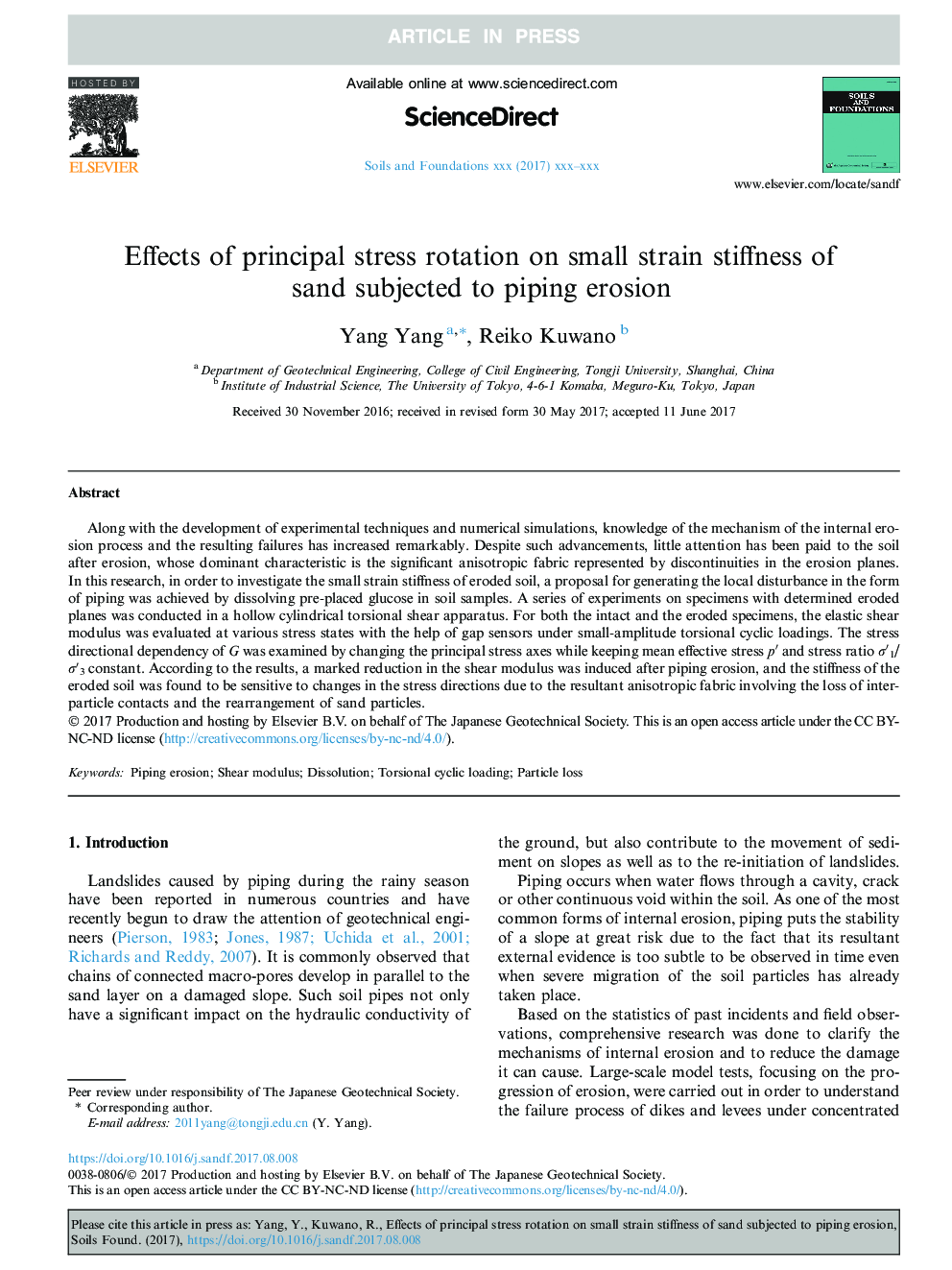| Article ID | Journal | Published Year | Pages | File Type |
|---|---|---|---|---|
| 6773916 | Soils and Foundations | 2017 | 13 Pages |
Abstract
Along with the development of experimental techniques and numerical simulations, knowledge of the mechanism of the internal erosion process and the resulting failures has increased remarkably. Despite such advancements, little attention has been paid to the soil after erosion, whose dominant characteristic is the significant anisotropic fabric represented by discontinuities in the erosion planes. In this research, in order to investigate the small strain stiffness of eroded soil, a proposal for generating the local disturbance in the form of piping was achieved by dissolving pre-placed glucose in soil samples. A series of experiments on specimens with determined eroded planes was conducted in a hollow cylindrical torsional shear apparatus. For both the intact and the eroded specimens, the elastic shear modulus was evaluated at various stress states with the help of gap sensors under small-amplitude torsional cyclic loadings. The stress directional dependency of G was examined by changing the principal stress axes while keeping mean effective stress pâ² and stress ratio Ïâ²1/Ïâ²3 constant. According to the results, a marked reduction in the shear modulus was induced after piping erosion, and the stiffness of the eroded soil was found to be sensitive to changes in the stress directions due to the resultant anisotropic fabric involving the loss of inter-particle contacts and the rearrangement of sand particles.
Related Topics
Physical Sciences and Engineering
Earth and Planetary Sciences
Geotechnical Engineering and Engineering Geology
Authors
Yang Yang, Reiko Kuwano,
